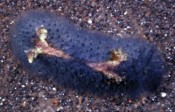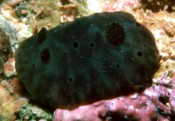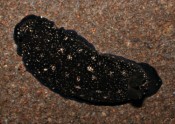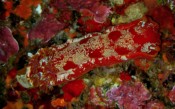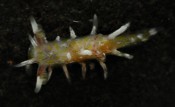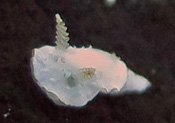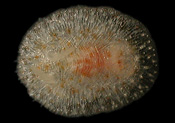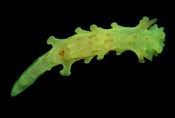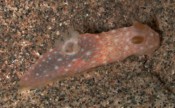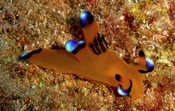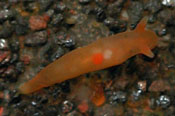Most
nudibranchs of the suborder Doridacea are distinguished by a circle of
gills surrounding a dorsally positioned anus. In some, however, the
dorsal gills have been lost (for example in the family Phyllidiidae
which has evolved secondary gills between the mantle and foot). In some
species, often referred to as cryptobranch dorids, the body is
flattened and the gills can be retracted into pockets. In others,
often referred to as phanerobranch dorids, the body is elongate and the
gills can not be retracted into pockets. Cryptobranch dorids are
primarily sponge feeders (often retaining toxins or spicules from their
food for use in their own defense) while phanerobranch dorids are
specialized predators on various taxa. There are at least 15 families
known from Hawaii.
An animal tentatively assigned to Bathydoris
(family Bathydorididae) was found in deep water (1000-3000 m) at Johnston Atoll by
the NOOA-Okeanos Explorer expedition, Laulima O Ka Moana, in 2017. Given it's
relative proximity, it might also be present in Hawaii.
|

